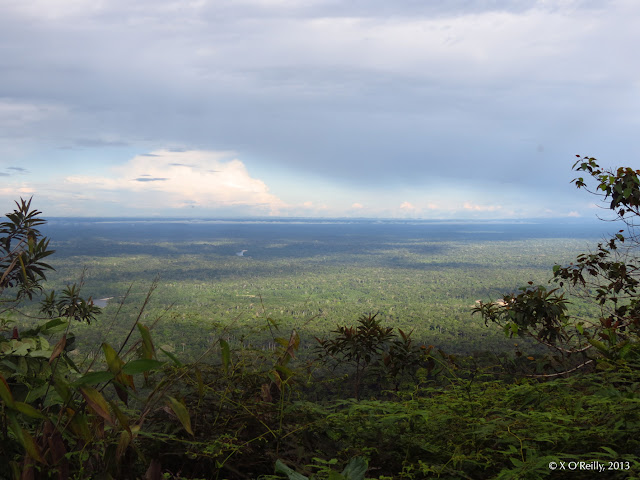Monkeying about Armadillo
About seven weeks ago, I began the second part of my mammal diversity project, setting camera traps out in primary forest. The largest contiguous tract of primary forest in Payamino is probably that which surrounds and englobes Armadillo Hill, the highest part of Payamino. Armadillo Hill isn't actually that high (700 m at its tallest peak, so just 400 m higher than the research station), but the steep and hilly terrain of the surrounding area makes hiking challenging, especially once off the few trails and in the thick of virgin rainforest.
So far, I haven't got many good camera trap photos from Armadillo Hill. The main problem has been my precalculated-GPS points landing on inclines where it can be more difficult to achieve the desired field of view. That's regardless of the fact that the difference in terrain between my secondary and primary forest grids will introduce another unwanted variable into data analyses.
 |
| Image 2 - Happy little black agouti (Dasyprocta fuliginosa) gnawing on a palm fruit. |
 |
| Image 3 - White-fronted capuchin (Cebus albifrons) after palm fruit |
The camera at the palm fruit had taken nearly a thousand photos in 21 days, mostly of black agoutis eating the fruits (Image 2), as expected. However, something I didn't expect to capture with a camera a foot off the ground: a monkey! (Image 3). I'm not sure what kind of monkey yet, because as you can see, it kept its back to the camera; but judging from the size and colouring, it could be a white-fronted capuchin (Cebus albifrons).
The seven closest points of my primary forest camera grid have now been covered and tomorrow I will start placing cameras up to a day's walk away from the station, for which I will have to camp out in the jungle. People don't really go to that part of the mountains, so it should be very interesting and worth the effort. I'm not sure whether I am looking forward to it or dreading it – perhaps a little bit of both!
 |
| Image 4 - View from a lower part of Armadillo Hill, abou 600 masl. |




Comments
Post a Comment